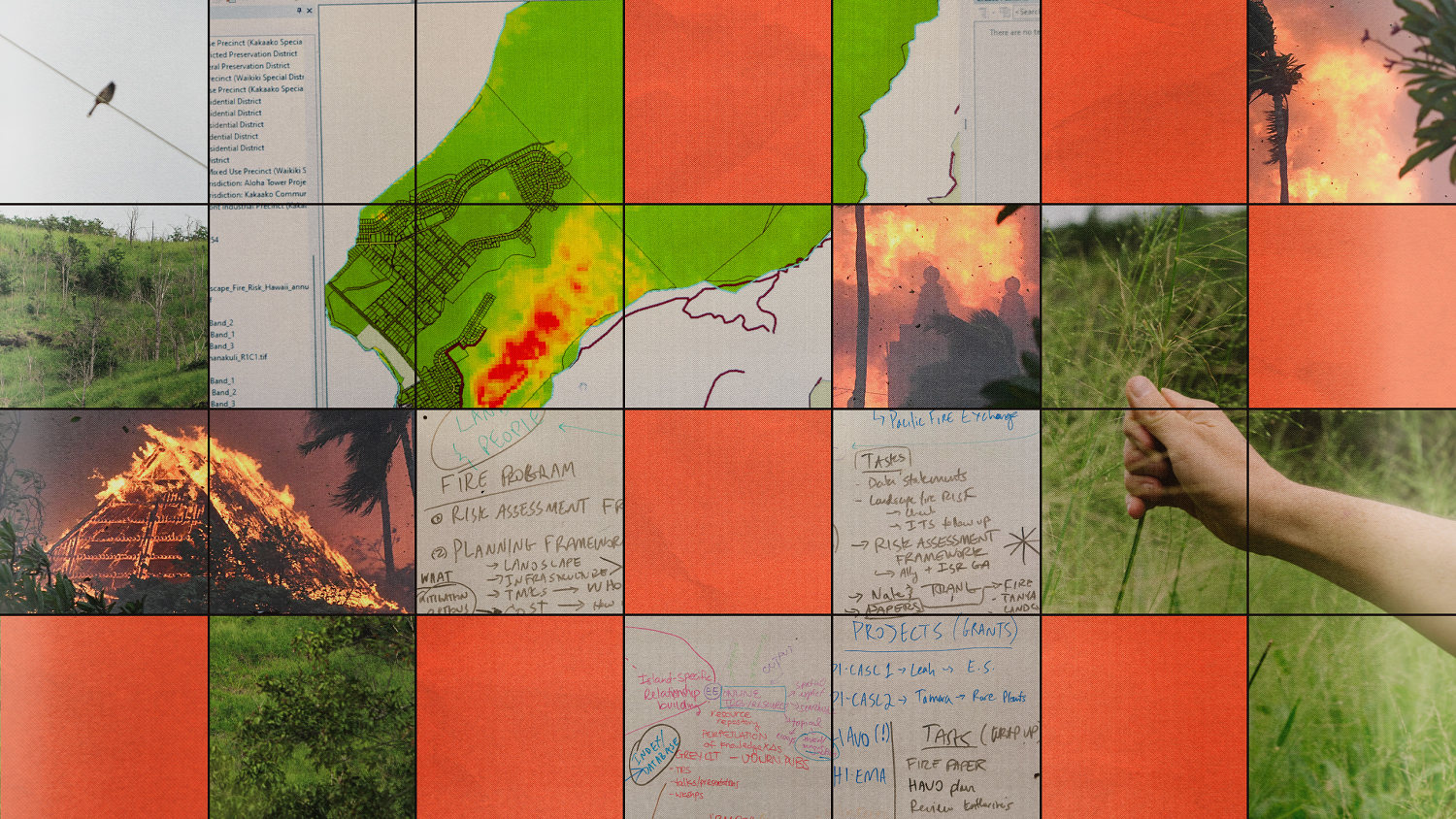Once unthinkable, frequent fires are Hawaii’s new normal.


“We started putting out information about this in 2014,” said Trauernicht, who noted that fire frequency and severity has only increased since then. “This is not [just] a Lahaina problem. They just got the worst outcome you can imagine.”
Surprise
Chris Speicher has sold real estate on Maui for more than five years. Clients might ask about hurricanes, but rarely fire, he said. People don’t associate it with Hawaii.
“Fire risk is something that should be openly talked about,” Speicher said. “I think that it’s a surprise to people.”
Like many of his clients, Speicher said he didn’t realize just how dry parts of the islands could be when he first moved to the West Maui coast, where Lahaina is located, in 2018. “West Maui is only green a couple of months a year. The rest of the time it’s like a desert,” he said. West Maui had always been dry, but as its carefully maintained plantations of sugarcane and pineapple — both tropical plants — shut down, it became covered in nonnative, difficult-to-remove flammable grasses.
Dry buffelgrass in Lahaina. (Matt McClain / The Washington Post via Getty Images)
Dry buffelgrass in Lahaina. (Matt McClain / The Washington Post via Getty Images)
Over the next five years, Speicher was evacuated five times from three different West Maui homes due to nearby wildfires.
Just a few months after he arrived on the island, a wildfire caused by high wind from Hurricane Lane burned through more than 2,000 acres, including parts of Lahaina, and caused approximately $4 million in damage. Speicher’s home survived the fire, but two neighbors lost their houses.
In August 2023, Speicher was living in Kaanapali, just north of Lahaina, when his family received another evacuation order, once again for a wildfire influenced by hurricane winds.
Speicher said he didn’t feel any better prepared, though his home survived. His family returned to it, but was evacuated twice more for nearby fires in the next three weeks. The third time was the last straw for Speicher and his wife, who made what they called a “gut wrenching” decision to leave Hawaii altogether. They were tired of having to be on constant alert in case a fire broke out, he said. They continue to sell Maui property, but now live in Maryland.
Chris Speicher, right, at his home in Kaanapali, Maui, with friend Joe Schilling. Speicher safely evacuated his home during the 2023 Maui wildfires. Schilling died in the Lahaina fire.
Chris Speicher, right, at his home in Kaanapali, Maui, with friend Joe Schilling. Speicher safely evacuated his home during the 2023 Maui wildfires. Schilling died in the Lahaina fire.
A federal analysis of wildfire risk to communities shows that of all 50 states, Hawaii has by far the highest risk of “fire consequence” — the likelihood of high-intensity fires near homes.
“When we did this modeling four years ago and we saw how high Hawaii was ranking, we questioned ourselves and really thought, ‘Can this be right?’” said Joe Scott, one of the lead researchers of the analysis and head of Pyrologix, a wildfire risk research firm. His team ran the numbers again. “We were very surprised by this result, but we couldn’t find a reason it was wrong.”





